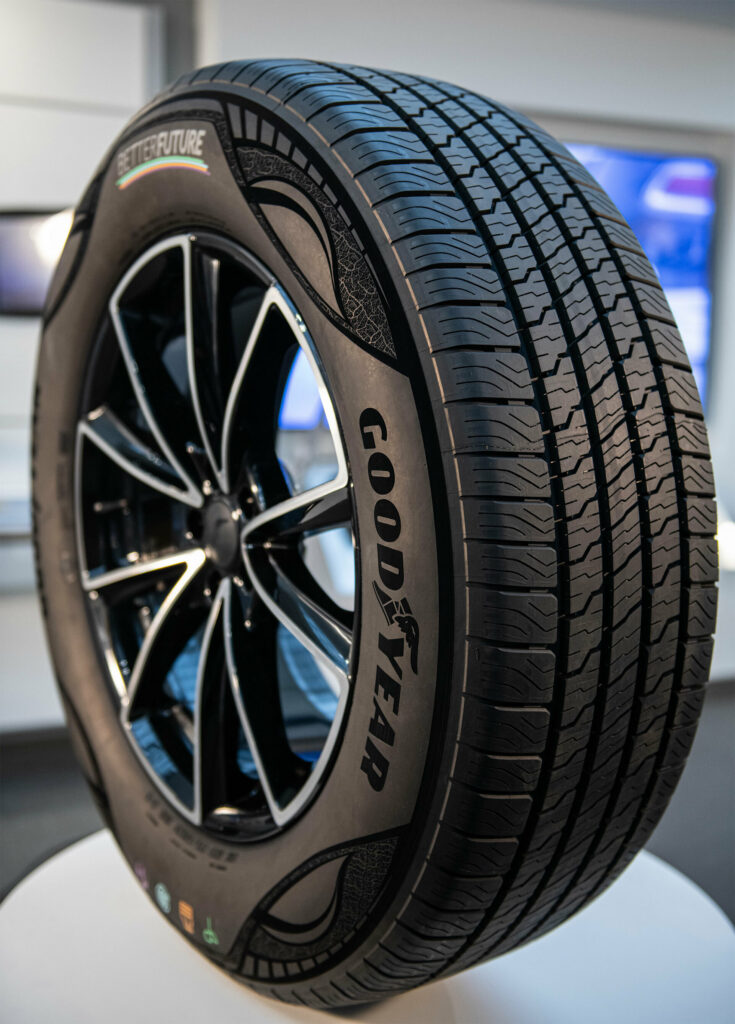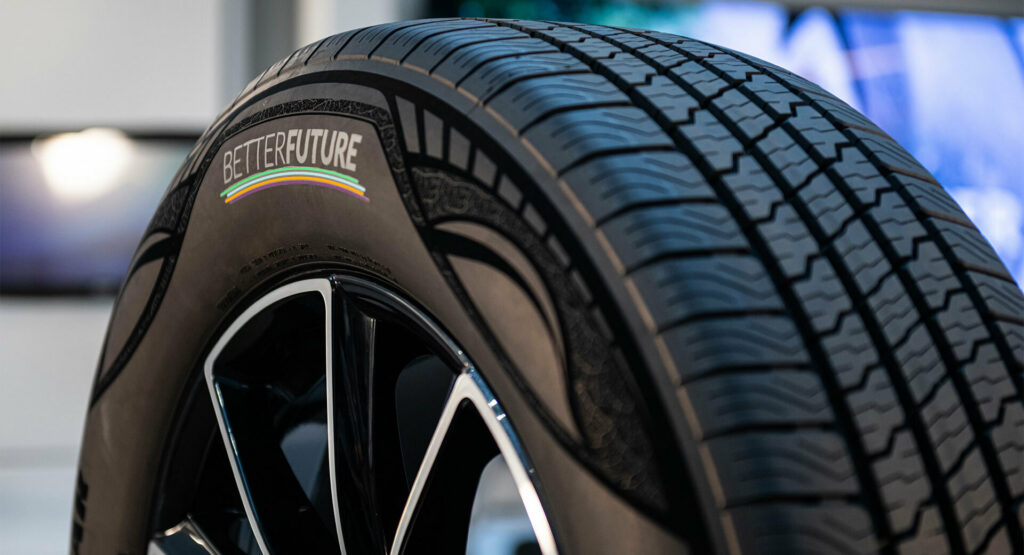Goodyear has unveiled an innovative tire concept made from 90 percent sustainable materials and plans to begin selling a tire made from “up to 70 percent” sustainable materials this year.
This new demonstration tire incorporates some 17 ingredients across the 12 different tire components and has a lower rolling resistance than a traditional tire, contributing to fuel savings and a reduction in its carbon footprint.
Found within the tire are four different types of carbon black. This material is traditionally made by burning various petroleum products but the carbon black used in the sustainable tire is produced from methane, carbon dioxide, plant-based oil, and end-of-life tire pyrolysis oil feedstocks.
Read: Goodyear Must Recall Deadly Motorhome G159 Tire Last Produced In 2003 For Tread Separation
Elsewhere, the tire uses soybean oil to ensure that the rubber compound remains pliable in changing temperatures. Goodyear has also managed to produce silica from rice husk waste residue, a byproduct of rice processing that is often discarded. Petroleum-based resins have also been replaced with bio-renewable pine tree resins.
Important in the structure of any radial tire is head wire and steel cords. The 90-percent-sustainable-material tire concept uses bead wire and steel cord from steel with high-recycled content using the electric arc furnace process.
Goodyear acknowledges that bringing a 90 percent sustainable-material tire to the market will require further collaboration with its supply base. Despite having a lot of work ahead of it, Goodyear isn’t planning to stop at the 90 percent figure and wants to produce a 100 percent sustainable-material tire.
“We continue to make progress toward our goal of introducing the first 100% sustainable-material tire in the industry by 2030,” senior vice president of Global Operations and Chief Technology Officer at Goodyear, Chris Helsel said. “The past year was a pivotal one toward achieving this goal. We researched new technologies, identified opportunities for further collaboration and utilized our team’s tenacity to not only demonstrate our capabilities to produce a 90% sustainable-material tire, but to also produce a tire with up to 70% sustainable-material content this year. Our team continues to showcase its innovation and commitment to building a better future.”




